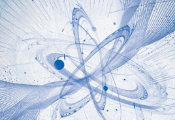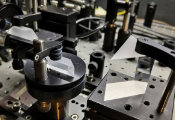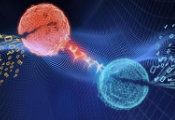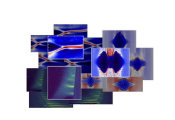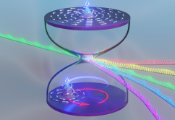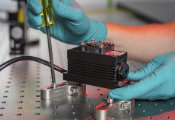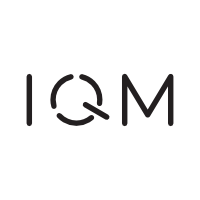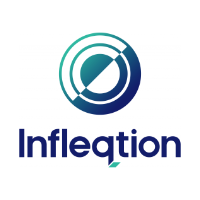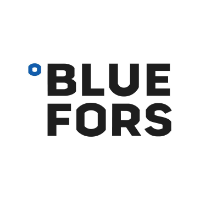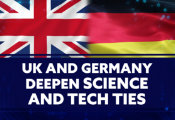World’s First Ultraweak Photon Emission Technology Holds Promise for Medical Forecasts
Ottawa, Ontario, July 21, 2025 - If you've ever been to an aquarium, you've probably seen sea creatures glowing in the dark. This phenomenon comes from chemical reactions, known as bioluminescence, that some marine organisms use to defend themselves or attract prey.
But there's a different kind of glow, called ultraweak biophoton emission, that all living beings—plants, animals, humans—emit. These tiny flashes of light are naturally generated by the body but are much fainter, so they are invisible to the naked eye. Scientists are still working to fully understand their role. So far, they have linked these emissions to various biological processes, including cell metabolism and cellular communication.
"Because light is closely linked to life, changes in its intensity or spectral distribution may reflect disruptions in the body's metabolism or cell-to-cell communication, which could potentially serve as early indicators of disease," says Dr. Maria Moreno, Interim Director of R&D at the translational bioscience group at the NRC's Human Health Therapeutics Research Centre.
But biophoton signals are so weak that they can be detected only with highly specialized equipment, which poses a huge challenge for researchers trying to understand their source and function in biological systems.
Developing first-in-class biophoton instrumentation
To address this technology challenge, Drs. Moreno and Umar Iqbal, also from our Human Health Therapeutics Research Centre, partnered with Canadian imaging technology company Photon etc. to develop a next-generation biophoton imaging system. This highly sensitive instrument—the first of its kind—was custom designed to meet the needs of in vivo rodent studies. And now this technology is commercially available.
Using this novel instrumentation, researchers confirmed that live mice emit light, in other words, they glow. Even more intriguing, the light does not stop glowing immediately after death. Although the light begins to fade after death, some organs—like the brain, eyes and liver—continue to emit a faint glow for up to 1 hour. This suggests that ultraweak biophoton activity may continue for a period of time after life ends and that different organs shut down at different rates.
"This is the first time we have had solid proof that mammals naturally emit this type of light, and that it follows a measurable pattern even after death," says Dr. Moreno. "It gives us a new window into how biological processes wind down and may help us better understand how life fades at the cellular level."
In their recently published paper, Imaging Ultraweak Photon Emission from Living and Dead Mice and from Plants under Stress, senior author Dr. Daniel Oblak, a professor at the University of Calgary's Institute for Quantum Science and Technology, and his colleagues found that the leaves of plants emitted significantly more ultraweak biophotons from areas that had been stressed. The experiment that led to this finding involved making a small cut in the surface of the leaves. "This shows the possibility that ultraweak photon emission could serve as a diagnostic tool by indicating whether tissue is damaged or alive," Dr. Oblak says.
Lighting up the future
Dr. Moreno notes that there is still work to do in developing new and more precise imaging technologies. "Realizing the full potential of ultraweak biophoton imaging will require further technological progress," she says. "Extracting meaningful diagnostic information with greater precision and temporal resolution will depend on developing more advanced instrumentation and analytical tools."
To that end, Dr. Joe Tauskela from our Human Health Therapeutics Research Centre and Dr. Duncan England, a senior research officer at our Quantum and Nanotechnologies Research Centre, are collaborating to set up a second custom-made biophoton imaging system—one with capacity to detect biophoton signals directly from brain cell assemblies to allow for a more fundamental assessment of biophoton origin.
They are very interested in exploring whether light could represent a third form of neuronal communication, alongside the well-established electrical and chemical signalling.
As the technology continues to advance, biophoton imaging may offer the potential to detect early signs of disease—and monitor its progression and response to treatment, all without the need for invasive procedures.
"Our current research focuses on 2 main areas," explains Dr. Moreno. "First, we are investigating whether these spontaneous light emissions can be used for early disease detection, including cancer. Second, we are exploring their potential role in neuronal activity."
Reflecting on the broader implications, Dr. England adds, "The results of this study, and others like it, are truly fascinating. All living tissues emit extremely weak light spontaneously. Is this simply a metabolic by-product, or does it serve a deeper biological function? Could it one day be harnessed for clinical diagnostics? These are the kinds of questions that will continue to fuel scientific exploration for years to come."
Building on collaboration
This 3-year collaborative project yielded promising results, and also provided the University of Calgary with a state-of-the-art imaging set-up. The research and equipment was funded through the Internet of Things: Quantum Sensors Challenge program (QSP). Additional funding support from the Innovative Solutions Canada program enabled the development of the first biophoton imaging system for rodent studies and helped bring it to market.
"The biophoton imaging project illustrates how the NRC and its Canadian collaborators in academia and industry can work successfully together on new generations of quantum technology," says Dr. Marina Gertsvolf, Director of the QSP. "The discovery leverages this novel technology to probe into previously inaccessible properties of nature."
The project also reinforces the 3 pillars of Canada's National Quantum Strategy by supporting research, developing talent and translating research into scalable, commercial products and services that can benefit Canadians, our industries and the world.
This project was also supported by grants and contributions awarded through the Collaborative Science, Technology and Innovation program, administered by the NRC's National Program Office.

